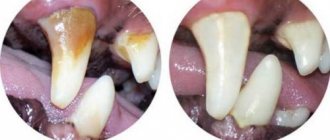- Cats
- General issues
Veterinary practice shows that at least 60% of all cat owners today immediately consult a veterinarian about castration of their pets. And this is very good, since a reasonable approach to keeping pets can reduce the number of stray cats. The only difficulty that many breeders face is the best age to castrate a cat. The fact is that this nuance still causes a lot of controversy among both veterinarians and animal owners themselves. In this article we will try to describe all the periods that are most suitable for castration of an animal.
What is cat castration
Castration of cats is a procedure to stop an animal's sexual activity. By ceasing to produce reproductive hormones, the body loses its reproductive function. This allows owners to resolve the issue of their pet’s sexual behavior. There are various methods of castration:
- medicinal,
- chemical,
- surgical.
Medical castration involves the use of hormonal drugs. Chemical castration involves radiation exposure of the cat's testes. These methods do not always provide a complete guarantee and are unsafe for the health of the animal.
The most popular among owners and veterinary specialists is surgical castration of cats, which modern veterinary medicine classifies as an ordinary operation. This is a 100% guarantee of removal of the gonads. Animal owners should have an idea of how cat castration occurs in order to responsibly approach the issue of preparing the animal for surgery, postoperative care, and understand the existing risks of surgical manipulation. It is also important to know the optimal age of your pet for a safe and effective procedure.
Reasons for castration of cats
Opponents of the operation say that this procedure is inhumane and even criminal, representing an unnatural intervention in natural processes, and leading to the disability of a helpless creature. Some even call it a clear manifestation of selfishness. Nevertheless, castration is a good way to adapt a domestic cat to atypical living conditions at home.
This is interesting! Animal psychologists consider the castration procedure not only useful, but also necessary. The point is primarily in the physical and psychological health of the pet.
Adults who have reached sexual maturity can spend most of their lives fighting for territory and the cats on it . As a result, every defeat or loss of some area of the yard is a great stress for the animal. And cat fights do not provide anything useful - the animal receives injuries of varying severity, and in some cases becomes infected with infectious diseases and parasites.
The process of mating with yard cats is even more dangerous than fighting. If the female is sick, she will definitely give this disease to the “groom”. And that’s okay, the cat can be cured. But what to do with the huge number of stray kittens, which in the future will also give birth to the same number of unfortunate, useless animals, doomed to die on the street from hunger, cold and infectious diseases?
So what if the cat, after the operation, ceases to be considered the “owner of the yard”? Do you think it means anything to him? Hardly. Most likely, a satisfied cat will chase birds around the yard, bask in the sun, and he will absolutely not care how many “brides” the neighbor Ryzhik has. Therefore, when making a decision, you should not be led by your own convictions, but act solely in the interests of your four-legged friend.
Sterilization methods
There are different methods of sterilization. Not all of them are equally widespread and effective. Preference should be given to the one that the veterinarian who will be performing the procedure best specializes in.
Medication sterilization
To correct behavior, owners often use hormonal drugs that are designed to stop sexual hunting. Veterinarians strongly discourage the use of such medications.
Hormonal drugs do not have the best effect on the general condition of the female’s body. In addition, they only increase the risk of diseases of the reproductive system.
There is another method of medical sterilization, in which a special drug is injected under the skin of the cat. It is slowly dissolving. The effects of one injection can last for three years. This method is used for cats that have breeding value and will be involved in breeding in the future.
After a while, the functioning of the reproductive system is completely restored. This method is also effective if the cat has any contraindications to surgery related to its health condition.
Classic method
The incision is made at a distance of 2-3 cm from the navel along the so-called white line. There are not many blood vessels or nerves, so there is virtually no bleeding after the incision. The uterus is removed through the incision. A ligature is applied to the vessels. Next, the uterus is cut off. Removable or permanent sutures are placed on the skin.
You might be interested in: What causes purulent wounds on the cheeks of cats?
Sterilization through a side incision
This method is almost identical to the classic one, only the incision is made from the side. It is believed to be less traumatic and heal faster. However, this method may cause bleeding. In addition, this method is not very convenient for removing the uterus, so it is most often used only for castration - removal of the ovaries.
Laparoscopy
A very expensive method, which is not practiced in all clinics, since it requires special equipment. Two punctures are made on the cat's stomach, into which a camera and a special apparatus are inserted. The main advantage of this method is that the incision is very small, it does not require stitches and heals quickly. However, it is not always possible to completely remove the uterus through such a small incision. Most often, only the ovaries are removed during laparoscopy.
Pros and cons of the operation
If you castrate a cat before his first spree, you can get rid of the following for the rest of his life:
- aggression;
- cat marks in the house;
- surges in the animal's hormonal levels.
Statistics say that sterilized pets are calmer, more playful and affectionate. They scream less and live 1.5-2 years longer than their full-fledged counterparts. It is also important that the operation completely prevents the risk of prostatitis in a cat.
The negative aspects of sterilization include depriving the animal of its basic instinct to reproduce. This increases the cat's interest in food, which is why neutered animals often suffer from obesity. To control your pet’s weight, you should feed it only food labeled “For sterilized cats,” which is balanced taking into account the characteristics of their body .
The consequences of the operation itself can also pose a danger to the animal’s health, when the pet may have inflamed stitches, bleed, or have problems recovering from anesthesia. Preliminary tests and careful preparation of the animal greatly help to prevent these consequences.
Kitten development by month
A small pet develops very quickly, changes occur in its body every month.
First month
This is the most responsible and dangerous time. Kittens are born blind and deaf with weak immunity; they receive protection from microorganisms through their mother's milk. Kittens begin to hear on days 4-5, and their eyes open only at the end of the second week. At this time, pets cannot be separated from their mother; they receive all the necessary antibodies with milk, so they are completely protected. Also, the mother cat licks them, which is a massage and bathing at the same time. By the end of the month, the kittens begin to stand up, but they have difficulty walking.
Second month
The kitten is already getting up and running around, playing a lot with his brothers and sisters. He still does not leave his mother's side, and the basis of his diet is milk, but now he also tries adult food, helped by two rows of baby teeth.
At this time, problems with stool often appear, which are a reaction to the appearance of new food. The kitten does not have its own immunity, so for now it receives protection from its mother cat. By the end of the month, gender differences begin to gain momentum, males are slightly larger than females, and in some cats you can even see the testicles.
Third month
By the end of the second month, milk gradually disappears from the menu, the kitten switches to natural food, which is why the first vaccination should be carried out in the third month of life, since the kitten no longer receives antibodies from milk, but there are still few of its own.
Determining the sex at this age is very difficult, since many pets have not yet released their testes into the scrotum. Kittens can now be fed a little less often – 4-5 times a day. By the end of the third month, the kitten's immunity will be strong enough to be passed on to a new family.
Fourth month
At this time, the kitten already weighs more than a kilogram. The testes protrude into the scrotum in almost all males. However, if this does not happen, then there is no need to worry; sometimes it happens that the testicles reach their natural position only by 5-7 months.
By the end of the fourth month, kittens can reach 1.5 kilograms, at which time the baby teeth begin to change to molars. Also during this period, repeated deworming and routine vaccination take place.
Differences between sterilization of young and adult individuals
When a female is spayed before her first heat, there is a high probability that only her ovaries will be removed during the operation. This operation is called oophorectomy. If at the time of the operation the cat was already in heat, or even pregnant and giving birth, then the uterus can be removed along with the ovaries during the operation. This procedure is called ovariohysterectomy.
According to the advice of veterinarians, it is better to remove the uterus during sterilization, because over time this organ can begin to become inflamed, which will lead to disastrous consequences. In order for the uterus to be removed along with the ovaries, it is not necessary to wait for the first heat. But before the operation, you need to consult a veterinarian and resolve this issue together.
There are cases where age does not play a role in sterilization. Most often this happens when surgery is prescribed for medical reasons. In this case, it is necessary to undergo tests to check the condition of the animal.
How to castrate a cat
All operations of this type are divided into 2 groups:
- castration - surgical intervention to remove the testes;
- sterilization is an operation in which the spermatic cord is destroyed or ligated.
There are 2 ways to castrate cats - surgical and medicinal..
The first option is classic surgery under anesthesia. The seminal glands are removed from the scrotum after it is incised.
During the operation, there is a high probability of heavy bleeding when the testicle is removed. There are two ways to avoid this:
- The seminal canal is secured with medical thread, which then spontaneously resolves.
- The spermatic cord is tied into a knot.
Obedient adult ginger
Public method
The scrotum is opened. The cords are ligated and the testes are removed. The remains of the cord and scrotum are sutured. With this intervention, the entrance to the peritoneum is opened through the inguinal ring.
During the operation, an aged cat is under anesthesia
Private method
Only the scrotums are opened, but the membrane covering them is not. Thanks to this technique, there is no communication with the peritoneum.
Vasectomy
Refers to bloodless methods. A surgical intervention in which a fragment of the spermatic cord is ligated or removed.
Medication method
Cleaning the testicles is done with medications. A capsule containing the drug Suprelorin is injected under the cat's skin. Its main substance slowly dissipates, creating a prolonged effect, which leads to castration. The effect lasts for about 3 years. If mating is necessary, the implant can be removed by a surgeon.
This method has disadvantages. During the first 3 weeks after encoding, the male begins to be more sexually active, yell more strongly and mark. This is due to the effect of the implemented product. First, there is stimulation of the reproductive system, then oppression.
This option is rational if an animal has medical contraindications to standard surgical castration.
Recommended age for castration of cats
Cyrano lies sedated as technician assistant Wendy Brackett shaves him before surgery at North Carolina State University in Raleigh, NC, on Thursday, Jan.
26, 2012. The 10-year-old tabby received what is believed to have been the nation's first feline total-knee replacement. (AP Photo/Allen Breed) currently recommended in most countries around the world that male cats be neutered between 5 and 7 months of age.
. It is possible to castrate cats later, but this increases the risk that testosterone-dependent behavior problems may develop.
The reasons for castration at 5-7 months of age are mostly related to safety considerations for this procedure. Most veterinarians believe that at this age there is no need to resort to general anesthesia
, which makes the operation much safer, since the liver and kidneys of small kittens are less developed than those of older animals. Younger kittens may be less able to tolerate the effects of anesthetic drugs and may be less able to metabolize and eliminate them from the body. Recovery time after surgery is longer in kittens, and with general anesthesia there is an increased risk of complications, particularly in the liver and kidneys. Based on these considerations, in order to avoid general anesthesia, many veterinarians recommend castrating cats no earlier than 5 months.
Currently, however, advances in the development of anesthesia have led to the fact that many veterinarians have serious doubts about its danger for kittens under 5-7 months (in other words, they consider it completely safe). The recommended age was established quite a long time ago, back in the days when anesthesia was not as safe for animals as it is now, and relied largely on drugs, unlike modern ones, which have a risk of suppressing the cardiovascular system and increasing the load on the body. kidneys and liver. To avoid complications, it was required that the kidneys and liver were sufficiently developed at the time of the operation. Since modern means of anesthesia are much safer than drugs of the previous generation, the minimum age for castration of cats in veterinary practice has noticeably decreased everywhere.
Are there any disadvantages
for castration at the recommended age of 5 - 7 months? Yes, just like castration at a very early age (see below), some disadvantages are also present with castration at a normal (5 - 7 months) age:
- Some people find it inconvenient to wait up to 5-7 months;
- There is a possibility that up to seven months a cat may be old enough to become the father of unplanned kittens, increasing the number of stray cats;
- Owners who would like to microchip a kitten under anesthesia along with castration believe that the kitten may become lost while waiting to reach the recommended age;
- Many behavioral problems typical of breeding cats may appear before the kitten is 5 months old (urine spraying, aggressiveness). Such problems, having appeared, can take hold and persist even after castration;
It should be noted that according to the sources used in preparing this article, the ability to produce viable sperm and therefore fertilize cats before 30-36 weeks of age (i.e. up to 7 months) is considered unlikely for cats. Cats usually reach full sexual maturity between the ages of 18 months and two years. It is also unusual for cats to begin marking territory and starting fights over cats and to increase their status before reaching one year of age (usually 18 months to two years).
Kitten castration
Veterinarians established the recommended age for castration a long time ago, but now this operation is increasingly being performed on small kittens. The fact is that medicine does not stand still, and modern drugs do not cause as much harm to the body as anesthesia did before. Anesthetic drugs that were used previously required a long recovery period and negatively affected the condition of the kitten’s liver and kidneys. Modern drugs have become safer, which has made it possible to castrate small kittens.
You can castrate a kitten as early as 8 to 12 weeks of age, and this will not lead to complications.
In some countries, there is a law that obliges cat owners to neuter kittens before 12 weeks. Neutering young kittens has many benefits and saves time. A cat who has been neutered at an early age will not have problems such as aggression and territory marking. The kitten undergoes castration at a young age, due to which the operation will build less , because the amount of drugs used is less. Small kittens recover from surgery faster and return to their previous lives.
Also, castration at an early age has disadvantages:
- There is a risk that the kitten will have a hard time with anesthesia, and the drugs will affect the condition of the kidneys and liver;
- There is a risk that while under anesthesia, the kitten will experience hypothermia (lower body temperature).
- After castration, testosterone production stops, which can lead to the cat not developing masculine character traits.
- After castration, a cat can continue to behave like a kitten when it grows up.
- By castrating a kitten, you can lose a promising cat for breeding, because this can only be determined after six months.
- Early castration can lead to urological problems in the future.
It is necessary to castrate a cat at such an early age, or you can wait a little longer, each owner decides for himself. In fact, there is no reason to rush into castration before the animal is six months old.
Contraindications - when cats should not be castrated
The operation has a number of contraindications:
- urolithiasis disease;
- cardiopulmonary failure;
- renal failure;
- If the cat is undergoing other complex treatments.
Old age is also considered a relative contraindication. After 7-8 years, the risk of developing postoperative complications increases.
A cat under anesthesia on the operating table at the age of 3 years.
What to do if the most suitable period for castration is missed?
For an adult cat, from 1 to 7 years old, according to veterinary clinics, such an operation does not threaten anything terrible. However, having passed the extreme age of seven, the cat begins to age, and castration can result in death for him.
Taking this issue seriously, you must not miss the best moment when you can castrate a cat quite painlessly, and then the main negative consequences will not affect him.
Although there may be many reasons why the owners could not do this on time. Someone is afraid, worried about the health of their furry pet. Someone was unfamiliar with the specifics of the physiological development of cats. But when a decisive factor appears, when patience comes to an end and the whole house seems to be saturated with a pungent unpleasant odor, most loving owners are simply forced to take such radical measures.
Postoperative care
On the first day after surgery, it is necessary to constantly monitor the pet’s condition. Coming out of narcotic sleep lasts 1–3 hours, but the consequences may persist for the next half day: drowsiness, weakness, loss of coordination.
Lay a soft blanket on the floor with a moisture-absorbing diaper on top - it will be an excellent bed for the animal. Chairs and beds are not suitable now, as the cat may fall from them . Monitor body temperature, evenness of breathing, turn your pet over to the other side every half hour so that its limbs do not become numb. Touch your nose and ears to check the reaction - the more active it is, the faster the anesthesia will end.
After waking up, do not forget to pay more attention to the cat. Don't let him jump onto high places - there is a risk of falling and injury.
After 5-6 hours, give the animal something to drink, and a day later offer a small portion of light food. Immediately place a clean tray next to your pet - it will be difficult for him . Don't punish mistakes; this is due to poor coordination. Use a special collar to prevent your cat from getting infected by licking the wound. You need to treat the incision site with regular brilliant green or a product recommended by a veterinarian. After a couple of days, the wound will heal, and the animal will regain mobility, as well as playfulness and a good mood.
Preparation period
Mandatory conditions for preparing a cat for sterilization are:
- 12 hour diet. This is due to the fact that anesthesia can cause the animal to vomit if there is food in the cat’s stomach. Aspiration of vomit causes a dangerous disease - aspiration pneumonia;
- The cat should not be given water to drink within 2–3 hours;
- treatment for worms. Carried out 10 days before sterilization;
- vaccinations. If the animal is not vaccinated, there is a risk of contracting an infectious disease after surgery.
Preparing a cat for sterilization
After surgery, the animal’s body is extremely vulnerable to various diseases. That is why a cat must have all required vaccinations at least a month before sterilization. In addition, it is important to carry out preventive deworming. It is also advisable to rid the animal of fleas and other parasites.
If the cat is over 10 years old, it must be taken to a doctor for examination before surgery. It is advisable to do an ultrasound to make sure that all internal organs are functioning normally.
The cat should not be fed 12 hours before surgery. This is necessary to avoid vomiting caused by anesthesia. Water should not be given in the morning.
The veterinary clinic should take with them a carrier, a disposable diaper (in case the animal wets itself under the influence of anesthesia), and the pet’s veterinary passport.
Postoperative care
The easiest way to care for an animal after local anesthesia: the main difficulty is to eliminate the effects of stress, which is quite simple for a loving and attentive owner. Although it doesn’t hurt to ask in advance what sedatives you can have in case of emergency. Then all that remains is to properly treat the wound - the doctor will give advice on such care.
After general anesthesia, the first two days will be especially difficult. The animal can sleep no longer than five hours, often waking up earlier. While the cat is sleeping, you just need to check the integrity of the reflexes: touch the ear - if it twitches, then everything is in order.
The behavior of a cat after castration on the first day requires utmost attention, since the animal is always disoriented after anesthesia: there is no need to disturb the cat at this time, but you should constantly make sure that it does not harm itself. It is impossible to unambiguously describe how cats behave after castration: it depends on many factors - the state of the nervous system, the level of stress received, general physical condition, the behavior of the people around them, and the character of the animal.
An important point is to care for the wound, especially in the first days: the cat can damage the seam when licking. Therefore, you either need to monitor him constantly, which is somewhat difficult: it is easier to wear a collar after castration of a cat - usually 4-6 days are enough. It is imperative to use an “Elizabethan collar” if the cat has infectious problems, especially in the oral cavity.
In addition, you need to remember about possible complications and be ready to always consult a doctor again: this is required by sudden changes in the color of the mucous membranes and swelling, heart rhythm disturbances, an increase or decrease in temperature, and breathing problems.
WHERE IS IT BETTER TO CARRY OUT THE OPERATION - IN THE CLINIC OR AT HOME?
It is better and safer to do any abdominal surgery in a veterinary clinic. In an operating room there are more opportunities to take emergency measures if something suddenly goes wrong.
It’s even better if the clinic provides a postoperative hospital service. Then your pet will be under the supervision of specialists throughout the crisis period. Of course, emergency measures are not always required.
Typically, young and healthy cats tolerate ovariohysterectomy well and, with minimal care recommendations, recover well at home. You will only need one more visit to the clinic to remove the stitches.
pros
sterilization in the clinic
: all necessary conditions for the operation are provided, the risk of emergency situations is reduced, and there is a high probability of overcoming them.
Minuses
sterilization in the clinic
: the owner’s time spent traveling and waiting for the end of the operation.
Despite the obvious advantages of surgery in a veterinary clinic, sterilization of cats at home is also practiced by most veterinarians and, with proper training and responsibility of the specialist, is technically no different from surgery in a clinic.
The advantage of sterilization at home is the absence of stress for the cat from traveling and being forced to stay in a place that is foreign to it (some cats are terrified of leaving the apartment), as well as the absence of risks of contracting infectious diseases (if the animal is not vaccinated). In addition, the doctor can be invited at a time convenient for the owner, which is also very important for people who are constantly busy at work.
Disadvantage of surgery at home : it is difficult to ensure high-quality sterility.











